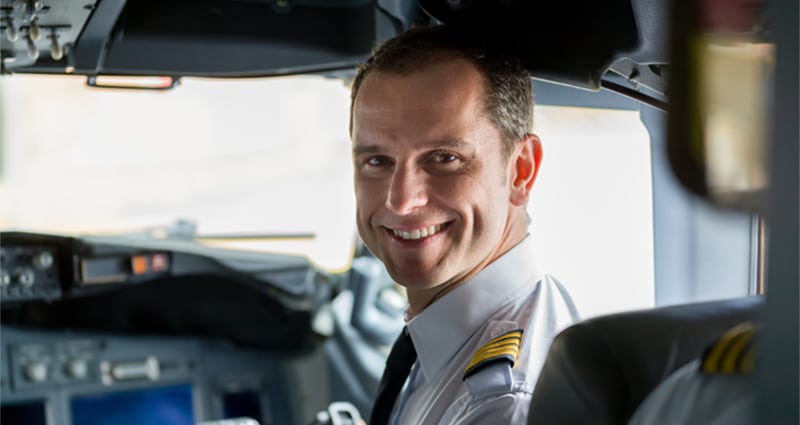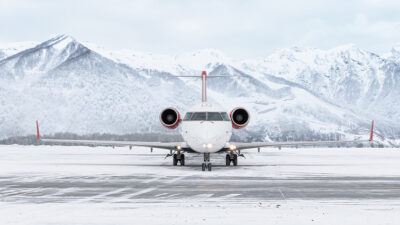Coming to Terms With the Business Aviation Talent Shortage

The aviation industry is somewhat unique in its talent requirements. Highly skilled and experienced personnel are essential to safe, effective and efficient operations. This includes all functional areas. While people outside the industry might think first, or even exclusively, of pilots when they hear the term “aviation talent,” aviation professionals understand that flight crews, ground crews, scheduling and operations teams, and the vendors that support aviation all require a continual stream of high-quality talent.
Unfortunately, there is growing concern that the business aviation talent pool is shrinking, and that a talent shortage will have wide-ranging effects. This may include everything from minor scheduling challenges to major safety issues.
Why is Aviation Experiencing a Talent Shortage?
Most industry experts believe the aviation talent pipeline is diminishing. In fact, some have observed that aviation is experiencing a “perfect storm” of talent challenges, with factors that include:
- Industry growth and the accompanying increase in demand
- An aging workforce that is approaching retirement
- Growing concerns about “quality of life” issues
- Interest in aviation careers that is flat or even declining
Vanessa Christie, CEO at Prevailance Aerospace, agrees. “I think the aviation talent pool is shrinking, first and foremost, because there is a whole generation of pilots and aviation talent that is retiring,” she says. “For a long period of time there was not enough hiring taking place to fill the need that we knew would be there when those professionals eventually left the industry.”
Complicating matters is the fact that training new aviation personnel and getting them the experience required for them to be valuable contributors takes time. As Daniel Mollicone, CEO and chief scientist and Pulsar Informatics, notes, “Any programs we put in place today will take years to have an impact on increasing the availability of aviation talent. So, I do see the challenges the industry faces getting worse initially. But regardless of the lead time, we need to get started today.”
Aviation Talent Recruiting or Retention: Which Is the Bigger Challenge?
Business aviation’s talent problem has two main components: recruiting and retention. Everyone would agree that both of these challenges factor into achieving and maintaining a healthy and sustainable talent pool. But which is the bigger issue? It depends on who you ask.
For Don Chupp, CEO and president of Fireside Partners, recruiting takes the top spot. “There is certainly validity to both of those needs,” he says, “But if I had to choose one to focus on first, it would be the need to attract new people to our industry. From the start we should be hiring people that have the potential to be effective in more areas than just the position we are hiring. Once new employees have joined a company, it is in that company’s best interest to find ways to retain them, and to contribute to their development and broad utility. This still applies whether we’re facing a talent shortage or not.”
Similarly, Jason Starke, Director of Standards at Baldwin Aviation, sees both factors as important, but feels that keeping good employees should be the first problem that business aviation tackles. “While I don’t consider the talent shortage to be critical at this point, I do see it as concerning. And retention is, perhaps, the biggest challenge we face. It seems that we’re in a job applicant’s market, so to speak, with a significant amount of cannibalization from the airlines. So, we need to find ways to make it worthwhile for the best people to stay in business aviation.”
At Global Aerospace, we believe it is our responsibility, and that of all organizations in our industry to place the same level of importance on both and address the issues concurrently. Attracting talent effectively means starting at the grade school level and igniting a spark of curiosity about aviation in kids who, as a result, may later be interested in learning more about careers in our industry.
Retaining talent requires that we keep all employees motivated and engaged. Long gone are the days when an employee had just one focus area. Ideally, employers should develop a multi-functional workforce. Not only does that flexibility benefit the company, employees who are more engaged are more likely to stay. Collaboration and communication are vital for employee engagement.
What Can be Done to Reverse the Talent Pipeline Trend?
Although business aviation faces considerable talent challenges in the years ahead, there is cause for optimism as the industry begins to bring more attention and resources to bear on the issues. Both the aviation professionals we talked with and industry experts in general recommend a number of actions, including:
- Increasing outreach to young people who may not have considered aviation as a career
- Focusing on improving work/life balance for aviation personnel
- Creating or expanding mentorship programs
- Lowering the barriers to aviation careers without lowering industry standards
- Being more mindful of the benefits available in other industries and market segments, and matching them where possible
- Changing the perception of business aviation as being reserved for fiscally advantaged companies or individuals, and humanizing the industry by sharing stories of charitable endeavors
Kara O’Connell, VP of global marketing at Medaire, also believes that improving how companies manage their workforces is important as well. “I think having good, solid processes in place for how we onboard and train our teams, and also how we provide ongoing education as the industry evolves, is key,” she says. “It’s also crucial that we’re continually assessing what’s important to each new generation that comes into the workforce and accommodating their needs when and where we can.”
In improving workforce management, it is important that we not overlook the value of personal development. A great deal of emphasis is, for obvious reasons, placed on professional advancement. However, organizations must make it clear that training can influence positive outcomes not only in a person’s career but also in their personal life. At Global Aerospace, we’ve observed that organizations that have solid personal development programs in place have much higher retention ratios than those who focus primarily on professional development.
Two overarching characteristics that experts agree are critical to the success of talent pool initiatives are patience and persistence. Clearly it will take time for the talent pipeline to be replenished and for procedures to be put in place to help ensure that it stays strong. Organizations must be prepared to weather the storm that may be negatively affecting their operations for the foreseeable future.
Stakeholders must also make a long-term commitment to addressing the industry’s workforce issues. This problem is not one that will be resolved with one-time or sporadic efforts to find, manage or retain a skilled workforce. A consistent, sustained, and coordinated effort is necessary.
What’s the Talent Pipeline Outlook for Aviation?
Global Aerospace and our industry partners believe that the future remains bright for business aviation. The first step in solving any challenge is fully understanding its scope and impact, and all indications are that the industry has reached that point.
Now, every organization and individual interested in the health and vitality of business aviation needs to work in their area of expertise and influence to start making incremental changes that move the talent needle in a positive direction. We’re confident that that will happen and are working diligently to help ensure that, like it has always done, the aviation industry turns obstacles into opportunities.

As a world-leading provider of aerospace insurance, Global Aerospace has been servicing the needs of the aviation industry for 95 years.
https://www.global-aero.com
© 2025 Global Aerospace, Inc.. All Rights Reserved.
Next ArticleRelated Posts

Mitigating Risk – Amidst the Chaos
There have been more high-profile aviation accidents in the last few months than in the last few decades. As we mourn those we have lost and aim not to make assumptions before final reports are completed, we must focus, personally and professionally, on assessing the risk of something similar happening within our aviation enterprises.

Let’s Get Personal (About Risk)
Aviation loves to talk about risk management. Insurance companies, manufacturers, and organizations all fully embrace the concept and know that to make it work on the line, we must get people at all levels and from all functional areas to embrace it. Tools such as the Flight Risk Assessment Tool (FRAT) are noble attempts, but at the core of it all lies the simple fact that people, as individuals, view risk differently.
